Asus VivoBook Review
Asus VivoBook
Forget the new 13in Retina MacBook, here's a stunning metal touchscreen laptop for under £400.
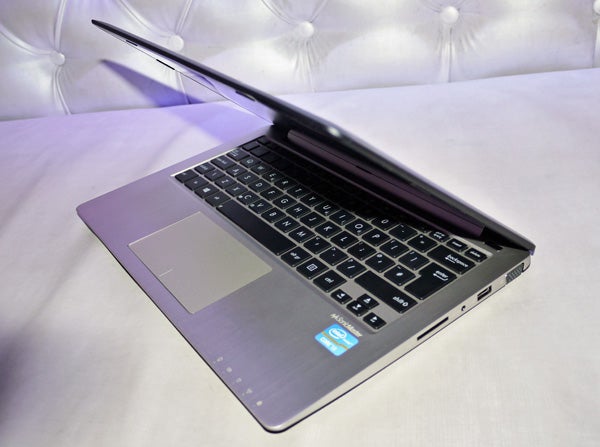
Verdict
Key Specifications
- Review Price: £399.00
- 11.6-inch and 14-inch glass touch screens
- Dual core Pentium – Core i7
- 4GB of RAM, 500GB HDD
- Aluminium unibody chassis with soft-touch base
Forget the new 13-inch MacBook Pro with Retina, Asus’ VivoBook could well be the new ultraportable line to get excited about. Get this: the affordable VivoBook sports a smooth, unibody aluminium base chassis with build quality to match its own premium Zenbook line and indeed Apple’s MacBook laptops. The lid is brushed black aluminium. It offers touch, which is essential to its Windows 8 OS, and it all hums along on a third-gen Intel processor with 4GB of RAM and HDD or hybrid SSD storage. What makes this superbly build and great-looking laptop family truly amazing is that the basic 11.6-inch model starts at a mere £399…
Read our full Windows 8 review here
Yes, under £400 will get you an ultraportable laptop in 11.6 or 14inches, one that easily looks like £1,000 and sports the kind of specifications you’ll find on many £600-£700 Windows 8 touch machines. You even get generous connectivity, with USB 3.0, HDMI and a card reader among others. It’s almost too good to be true, so did Asus cut any essential corners?
Check out our Asus Vivo Tab hands-on
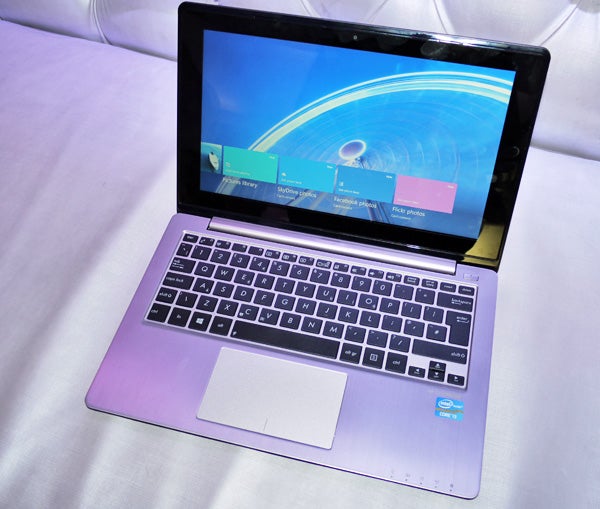
Asus VivoBook Design and Build Quality
This laptop is, in a word, gorgeous. It’s just so difficult to believe we’re talking about a budget laptop with the VivoBook. The brushed metal lid looks and feels great, though it does pick up the occasional fingerprint.
The keyboard surround and sides of the base are solid metal with a smooth, silver finish, easily on a level with premium laptops and far superior to other ‘affordable’ slim laptops and Ultrabooks like the Sony VAIO T13. It’s not just attractive, but also feels absolutely brick-like in its solidity.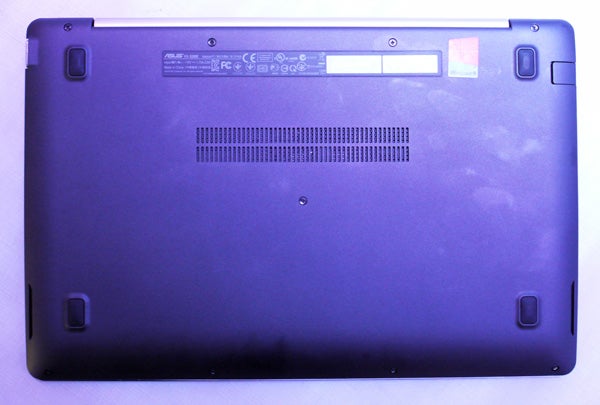
Cleverly, the bottom of the Asus VivoBook is coated in a soft-touch plastic that provides a superb grip when carrying this Ultraportable around and ensures it will never slip off your lap. This is the kind of thoughtful design that should be obligatory from every laptop manufacturer, and even Apple’s lovely laptops could take a leaf out of Asus’ book.
The screen is protected by a glass layer that extends across the black bezel to make this an ‘edgeless’ display, which protects it from enthusiastic touches and looks pretty great too, though it does cause the inevitable reflections.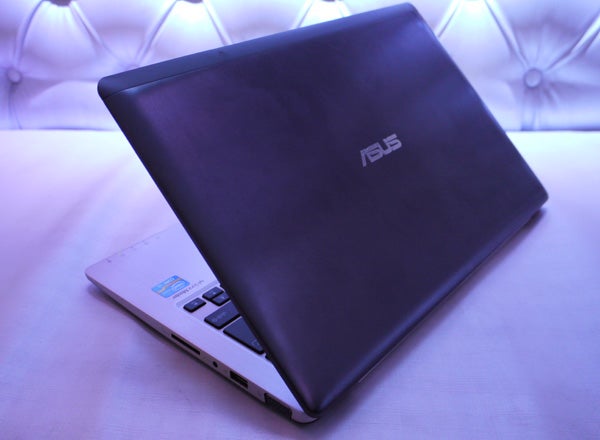
The only obvious ‘downside’ to the VivoBook’s design is that it’s a little thicker than the latest Ultrabooks at 21.7mm for the 11.6-inch model, but this avoids sharp edges, ensures good cooling and gives its ports plenty of room. Its weight is also perfectly acceptable at 1.3kg.
Asus VivoBook Connectivity
Connectivity is pretty generous for a laptop this affordable. Along the left you’ll find a slim non-Gigabit Ethernet jack, full-size HDMI, USB 3.0, USB 2.0, and a Kensington lock slot. 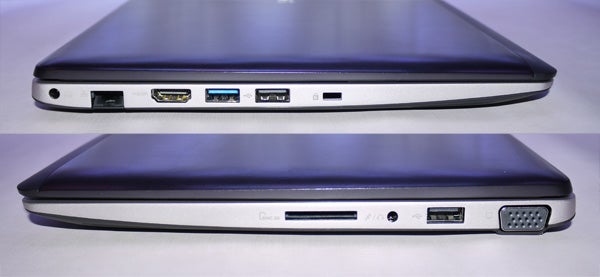
To the right we have an SD card reader, headphone/microphone combi jack, second USB 2.0 port and a good old VGA connector for those that still use displays without a digital input. Wi-Fi N is on hand for wireless connectivity.
Asus VivoBook Usability and Touch
The keyboard with its well-spaced black chiclet keys is reminiscent of that found on the Zenbook, though there’s just a bit more travel. So while feedback is still on the shallow side, it’s perfectly usable and typing is both accurate and comfortable. Naturally there’s no backlighting, a feature that laptops at twice the price also omit.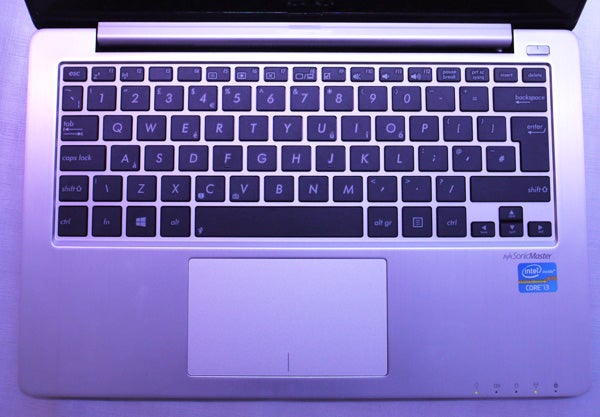
The trackpad is huge, much bigger than you would expect on the 11.6-inch model. In fact, on the smaller VivoBook it’s still larger than those found on many 13-inch laptops. It’s also impressively responsive and its integrated buttons offer a nice click. Of course there’s full support for Windows 8’s multi-touch gestures too.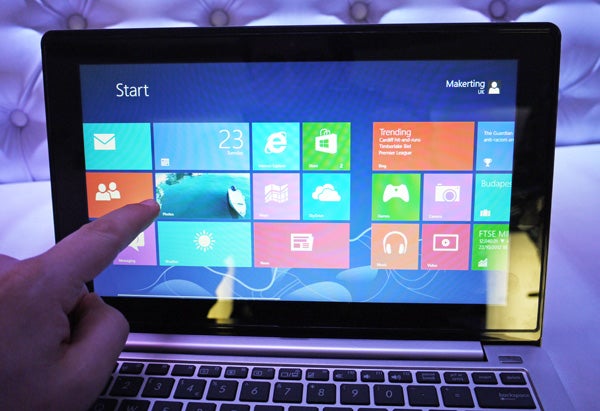
As we said in our Windows 8 review, Microsoft’s latest OS really needs touch to get the most out of it, so it’s a good thing that the Asus VivoBook range sport multi-point touchscreens. We found these to be as accurate and responsive as the best of the rest, with the glass surface providing a smooth experience.
Asus VivoBook Screen
As with most laptops and nearly every affordable Windows 8 device, the VivoBooks sport a 1,366 x 768 resolution. On the 11.6-inch model, this really is plenty to be getting on with, though on the 14-inch model it’s a tad on the low side.
The screen is, unfortunately, where Asus has cut the most noticeable corner. Rather than the IPS panels found in most of the Windows 8 tablets and Asus’ own Vivo Tab, the cheaper VivoBook uses a TN panel, and viewing angles suffer accordingly.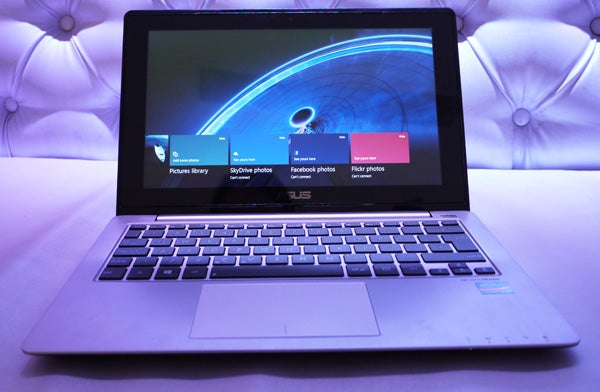
However, it’s important to remember that the screen of this Asus is no worse than that found on many laptops at twice the VivoBook’s price. Especially on the sub-£400 base config, it’s perfectly acceptable thanks to a nice brightness, punchy colours and decent enough blacks.
Asus VivoBook Specs
The £399 Asus VivoBook will come with a dual-core Pentium processor, backed by 4GB of RAM and a 500GB, 5,200rpm hard drive. To be honest, we’re quite envious of the US configuration, which swaps the latter for a hybrid 320GB HDD/32GB SSD instead. 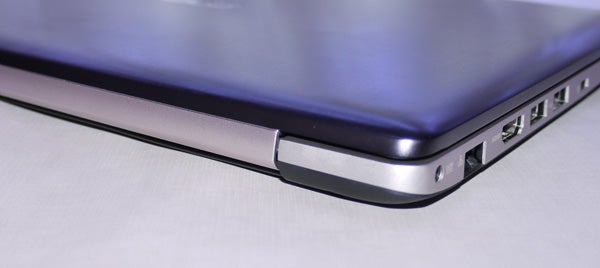
Adding £50 to the base price will get you a dual-core Intel Core i3-3217U 1.8GHz with the same base specs. Meanwhile the 14-inch model will come with your choice of Core i3- Core i5 CPUs. To be honest, we found the Pentium base model nicely responsive, except for those bits where the traditional hard drive slowed it down. We can’t wait to see if you can fit your own drive when we get a VivoBook in for full review.
Asus VivoBook Battery Life
Only battery life is an unknown factor at this stage, though the VivoBook’s 500mAh/38Wr unit seems a little on the low side. Still, we’re hoping for at least five hours of regular usage.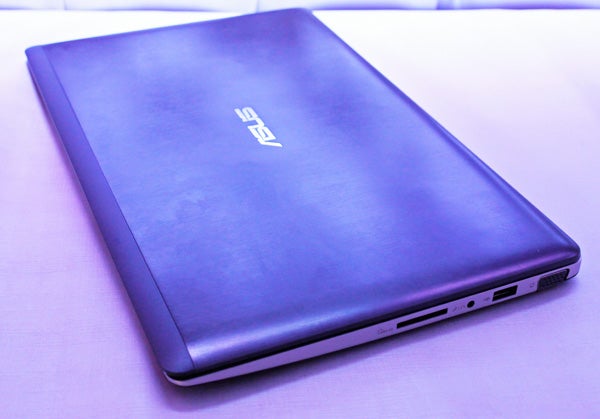
Asus VivoBook Value
The 14-inch VivoBook starts at £499 for the Core i3 version, while the Core i5 model will set you back £599 and the i7 one costs £699. However, it’s the 11.6-inch Asus VivoBook that truly represents one of the bargains of the decade, easily on a level with Asus’ Google Nexus, which offers the same kind of ‘too good to be true’ value.
For £399 (or £449 for the Core i3 model) you’re getting a Windows 8 touchscreen laptop that’s built like a gorgeous brick with a design that wouldn’t shame an ultraportable costing twice as much. Quite how Asus crammed this much quality into its chassis for so little money is a mystery, though the pinch can be felt just a little with the slow hard drive and TN screen.
Asus VivoBook Final Thoughts
Based on our hands-on time with the VivoBook, Asus has a real winner on its hands. Especially the 11.6-inch model offers astonishing value, giving you the kind of metal build and attractive finish that puts many more expensive ultraportables to shame – especially when combined with the glass screen front and soft-touch base. The Asus VivoBook also offers good usability, decent connectivity and adequate specs, all of which makes it a veritable bargain.
How we test laptops
Unlike other sites, we test every laptop we review thoroughly over an extended period of time. We use industry standard tests to compare features properly. We’ll always tell you what we find. We never, ever, accept money to review a product.

